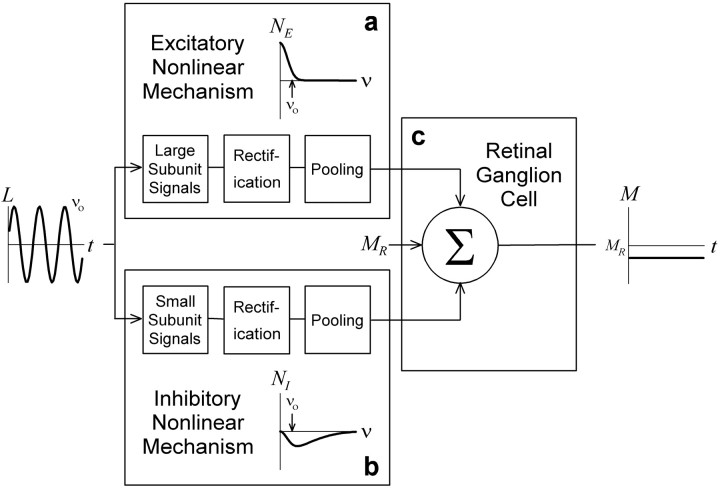Fig. 5.
A model of the mean-changing mechanisms. Moving from left to right, the figure depicts the luminance modulation at a point in space caused by a remote drifting grating of spatial frequency νo (leftmost plot). The high contrast stimulus activates excitatory and inhibitory nonlinear mechanisms that rectify and pool signals from many large or small subunits distributed across the retina (boxes a, b). If νo is sufficiently high, the grating will asynchronously activate the subunits, and their pooled output will be essentially constant. The magnitude of the large subunit outputNE is modeled as a Gaussian function of spatial frequency (inset a), and the magnitude of the small subunit output NI is modeled as the difference of two Gaussian functions (inset b). Ganglion cells combine input from mean-increasing and mean-decreasing mechanisms with the signal MR that sets their resting firing rate in steady uniform illumination (box c). Consequently, their mean rate M increases or decreases depending on which mechanism is more active at a given spatial frequency. Because the grating resides outside the receptive field center and surround, no modulated component would be evident in their response (rightmost plot).

